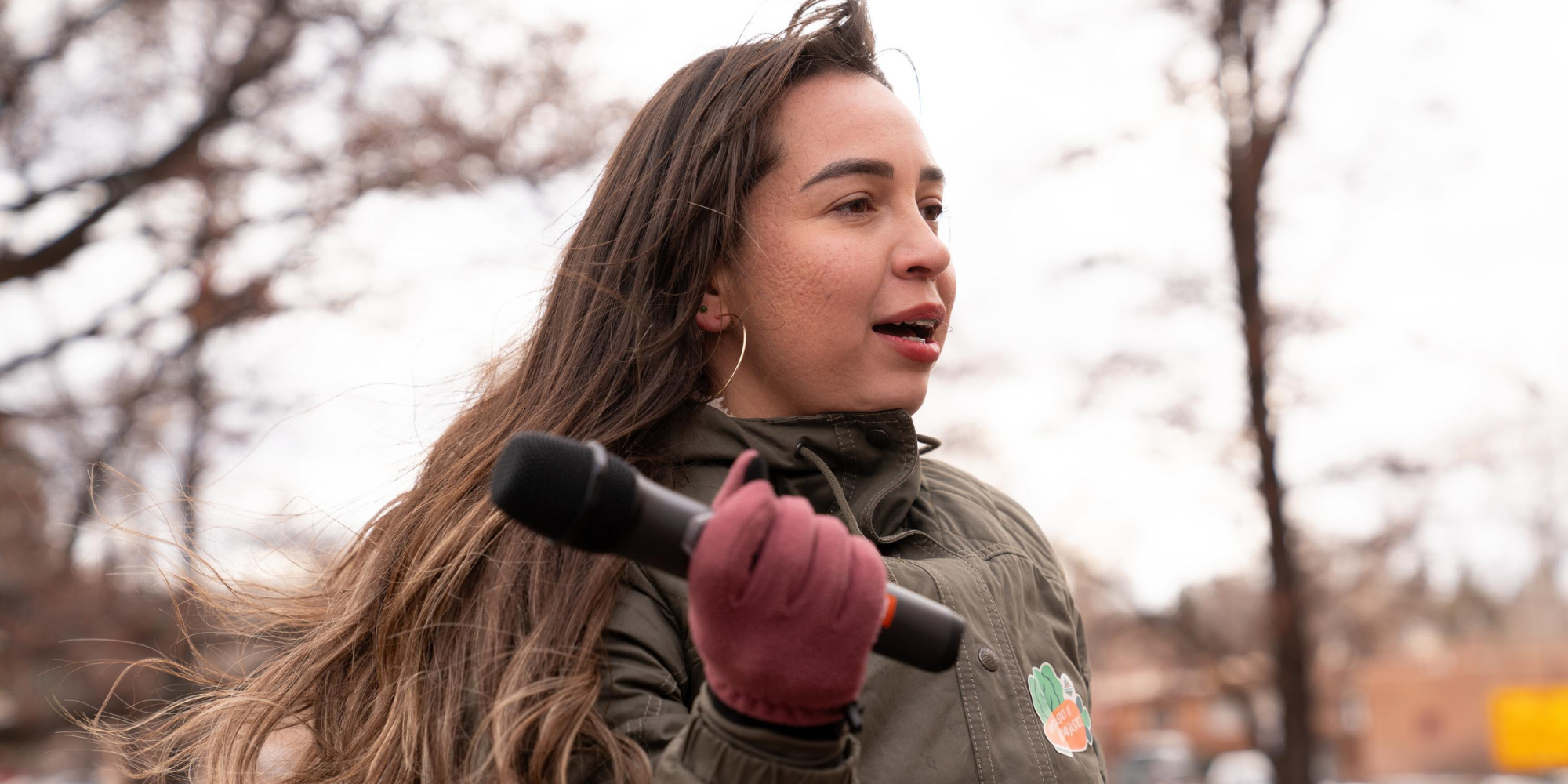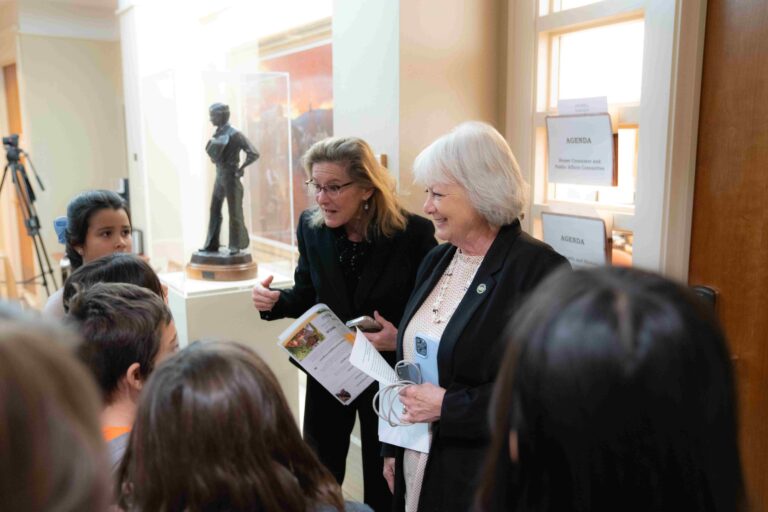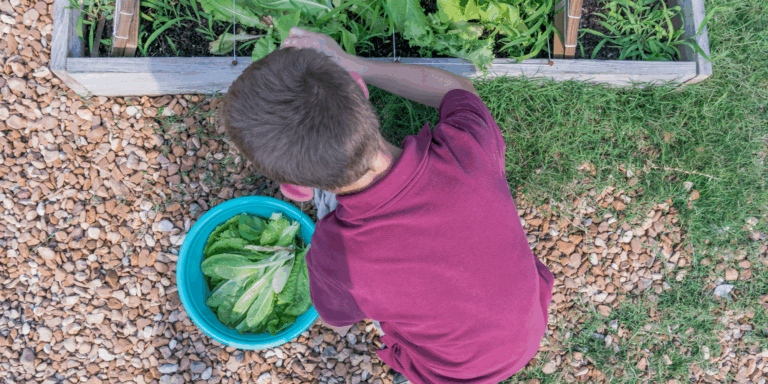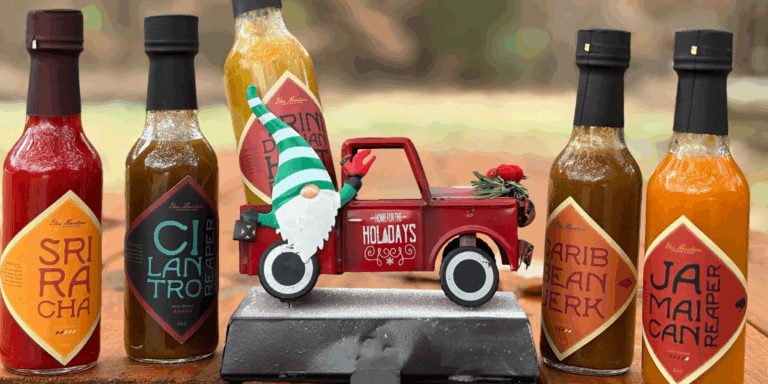Ask an Alum: Taty Trujillo in New Mexico
“There’s a place for you in this work.”
Help nourish students’ minds, bodies, and hearts this holiday season!
“There’s a place for you in this work.”

One of our favorite things about the FoodCorps alumni network is how many ways alums find to stay engaged with our community.
After her FoodCorps term at La Plazita Institute in Albuquerque, Taty Trujillo (NM ‘21) stayed involved as a site supervisor at South Valley Preparatory Community School, the middle school a few minutes away that she once attended as a student. And since late 2023, Taty has worked at FoodCorps, supporting our school programs in New Mexico.
As an Albuquerque native, Taty has brought tons of local knowledge to her roles as a FoodCorps member, site supervisor, and staffer, shaping a positive school food experience for countless New Mexico kids. Read on to learn more about what inspired Taty to get involved.
Taty: I’ve always had a strong interest in food and garden education, rooted in a deep personal connection to traditional foods. In my kitchen, red chile and green chile are staples, always paired with warm tortillas and fresh frijoles. Growing up, these foods were more than just meals, they were part of my identity. I knew I wanted others, especially students, to experience that same deep connection to food.
While I was finishing college, community members told me about a perfect opportunity to do just that. With my love for teaching students and my background in environmental studies, I saw this program as the ideal way to combine my passions and reconnect with my roots. I decided to take the leap and apply.
After my service term, I found myself back at my old stomping grounds, the middle school I once attended. I started by running their before- and after-school program, then later became their Community Schools Coordinator. In that role, I managed many community-driven projects, and because of my connection to FoodCorps, I wanted to stay involved in their work even though I was no longer a member.
Having the lived experience of being a member gave me a special appreciation for the work they were doing, and I wanted to set them up for success. By the end of my time there, I worked with their last member to establish a permanent garden. It was a magical feeling to be part of something so meaningful, especially because the school is in a very industrial part of the city, and it was important to create as much green space as possible.
Student success and education are causes I care deeply about, and I want to be part of a movement that prioritizes both, while engaging students in something we all share: the need to eat and enjoy food. This work will always hold a special place in my heart and remain my driving force.

New Mexico has so many wonderful native food options. Our agricultural history and deep connection to food have helped keep our traditions and culture alive. I grew up eating pinto beans and red chile, and I always wondered why this food wasn’t served in my school cafeteria. My family would tell me, “This is the most important food you can eat.”
Now, as an adult, I’m seeing school cafeterias transform—providing students with the opportunity to enjoy local native foods through programs like New Mexico Grown. This initiative, made possible by the Healthy Universal School Meals Bill, is bringing culturally significant, locally sourced food to students’ plates. I believe these meals not only enhance student opportunities but also help shape their palates in ways that can influence their futures.
To me, community is helping one another in times of vulnerability. Community is gathering around a table to share knowledge and food. Community is passing down recipes that carry on for generations.
I had the privilege of working in a community garden, part of a program that distributed free food to the community during the pandemic. I had been away for college and felt nervous about returning home. I felt disconnected—almost like a stranger in my own place. [But] FoodCorps brought me right back in. I was working with students and at a nonprofit just down the street from where I grew up. I became embedded in the local food movement.
Moving back during a global pandemic seemed like it would be a challenge, but food became a powerful connector during a time when so many felt isolated. It was the perfect opportunity to reconnect with my community.
I’ve learned that change doesn’t happen overnight. This work takes time—much like growing a garden, where you won’t see a harvest right away. Not everything will go as planned, and sometimes you have to adapt and adjust.
I’ve also learned that students won’t all receive this information in the same way. When working with them, you have to meet them where they are. You can’t expect them to immediately want to eat locally sourced vegetables. Instead, you start by incorporating foods they’re already familiar with and then show them how these local foods can fit onto their plates.
That’s why the concept of taste tests is so important—it excites students, engages them in the process, and gives them the opportunity to have a voice and make choices about what they eat.
There’s a place for you in this work, no matter where you are in your journey with school food education. If you eat, you have a seat at the table. We should all want the best for the next generation, and that includes ensuring they have access to free, nutritious food in the place where they spend most of their early years: school.
Hungry for more? Sign up for FoodCorps emails to get fresh updates to your inbox.
Special thanks to CoBank for their support of FoodCorps in New Mexico.

Our 2025 Child Nutrition Policy Year in Review

Winterizing Your School Garden

5 Awesome Small Businesses by FoodCorps Alums